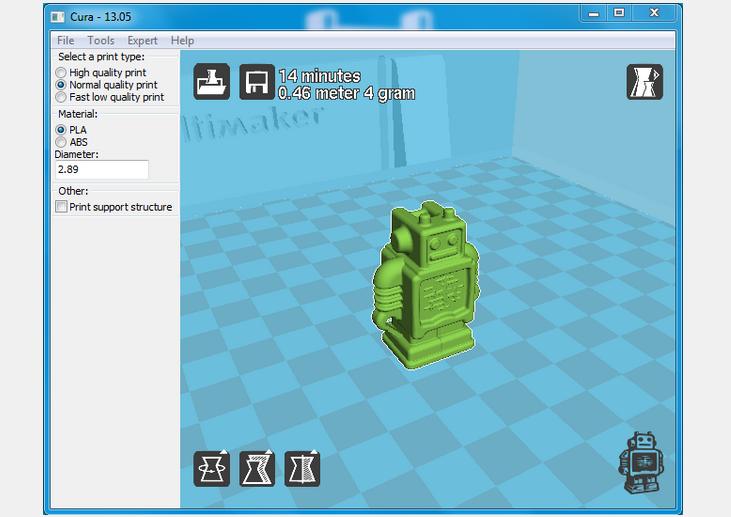
Cura is an open-source, interfacing software for the Ultimaker 3D printer. The software slices the model into sections, determines how to print each layer, and then converts the STL file to G-code.
How Cura Software WorksCura allows users to scale and position the 3D model, slice the model into G-code, edit configuration settings, and send the model to the 3D printer. Compared to other open-source software, Cura slices models in a fraction of the time. Cura is designed for the Ultimaker but can be used with other RepRap 3D printers.
Cura Software FeaturesThere are several basic and advanced settings.
Basic Settings:Layer Height: Allows layer height to be adjusted. The thinner layer height, the higher the quality of the part will be.
Shell Thickness: Edit the thickness of the side walls to improve the part strength.
Fill Density: Edit the density of the support structure. More density allows for stronger parts.
Print Speed: Allows you to choose the print speed.
Advanced Settings:Retraction Speed: Edit the speed that the filament is pulled back when the printer head needs to move over holes.
Cut off Bottom: Cutting off the bottom of the model sinks the object into the printer bed.
Enable Cooling Fan: Turn the cooling fan on/off. The cooling fan typically improves part quality, but you can turn the fan off if needed.
Cura Software HistoryCura was created by David Braam as open-source software. Braam's goal was to improve the RepRap open source software and set out to develop a faster, more advanced program. Braam partnered with Ultimaker to provide the interfacing software.
To learn more about the latest in 3D Printing, check out our 3D printing.
